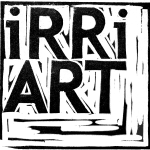MOMENTUM_InsideOut Presents:
IN
International Artist Gathering
17 June – 17 July 2014
Casablanca and Rabat

| boxes | zones quarters is an international artist gathering in Morocco, held from June 17th – July 17th 2014. Participating artists and curators come from Canada, Germany, China, Morocco, Iran and Russia. The project will last one month and will take place in various spaces in Casablanca and Rabat. | boxes | zones quarters finds its definition somewhere between a residency, exhibition and collaborative exchange. A diverse group of artists and art practitioners will be coming to Morocco to engage and exchange with the social and physical environment, in the production of site-specific works. Artistic and curatorial production will evolve in collaboration with and influenced by local artists and the general public. All works will be embedded within a larger exhibition series, some as a result of the exchange and others curated from an external selection. The aim is to encourage transcultural and international artistic exchange.
FEATURING:
Said Afifi, Rouzbeh Akhbari, Franco Arcieri, Daniela Ehemann, Edwin Gantert,
First Floor (HMFF 华茂一楼), Felix Kalmenson, Elle Kurancid, Zifeng Li (李子灃),
Carron Little, Geling Liu (刘格灵), Ash Moniz, Trevor Lloyd Morgan,
Ina Schoof & Ana Baumgart, Katie Switzer, Benjamin Wölfing, Lei Zhang (张磊)
Trevor Lloyd Morgan (b.1969) is an Australian artist living in Berlin, Germany. His art practice largely focuses on adapting media technologies and image formats to create works that explore the embodied image, dis/location, space and place in the everyday. These themes reflect his experience as an immigrant and expatriate, with an itinerant childhood in Australia, Papua New Guinea and the United States. Morgan became an artist after working for over a decade as a commercial photographer and digital imaging specialist. in 2014, Morgan completed his PhD, an Art Practice Based Research Project at RMIT University, Melbourne Australia, for which he developed the Head_X visualisation system.
Head_X: Commuter Space II, 2013
42‐minute video loop
16:9 1080p single channel, colour, sound
Head_X: Commuter Space II is a 42-minute video journey which captures a routine shopping trip to a media electronics store in Alexanderplatz, Berlin. In this work, the Head_X image construction slowly rotates to distance the intentional view as only one of several perspectives in the recorded visual domain of the PDU.
Head_X: Forest, 2013
20‐minute video loop
16:9 1080p single channel, colour, sound
Head_X: Forest is a 20-minute video loop that reveals a 5-minute directionless walk in a thick, forested area presented in four different ways. The artwork was produced in a setting where the visual domain is not related to external reference points, such as a horizon line or the parallel and intersecting lines and planes captured in transit space. It is presented in static and animated versions of the Head_X format.
All video works are constructions shown in unedited real-time.
This video series involved the development of two new media tools, a *Personal Documentation Unit (PDU) and the Head_X media format, which were then used to produce video works that reveal some of the ways people experience and adapt spaces to create personal place to feel ‘at home’. These works drew inspiration from many aspects of everyday routine experiences, how we move through transit spaces and in domestic places; how we orient ourselves from a body spatial perspective; the technologically augmented body; how we come to understand new ways of viewing imagery; and the evolving nature of surveillance and camera technologies in our everyday lives.
The PDU and the Head_X format present the view that approximates what we can see directly and four views we can only see by turning. These integrated embodied images and sounds present the journey by implying and revealing space, our place within it, and the experience of moving through it. A spatial dialog occurs when viewers try to orient themselves within the Head_X image combined with their instant identification of the embodied sound and movement that allows them to experience the journey while at the same time observing the medium. Through this engagement, the space between the artwork and the viewer may be transformed into a place of identification and meaning.
The journey shown in Head_X: Commuter Space II can be described in terms of the architecture and history of the spaces and places captured combined with the artist’s lived bodily experience of it and the viewers’ interaction, knowledge and experience of the images presented. The journey originates from the artist’s apartment, a late 19th century building with high ceilings and a steep staircase on Zimmerstrasse in Berlin, a street that formerly housed the Luftwaffe, Gestapo Headquarters, Berlin Wall and Checkpoint Charlie. The building lies at a landmark of cold war surveillance on the former border between capitalism and communism at the entrance to the American Sector, but when the artist leaves it, he walks through a tourist precinct to reach the subway that takes him onward to Alexanderplatz, an iconic former East Berlin city center square and shopping district. Morgan’s perceptions and understanding of spaces and places in these journeys are a complex interaction and melding of his past experiences as a commuter, his biological body and its reactions to the complex world around him. To make the journey, he walks through a crowded urban environment in a continual spatial negotiation. In counterpoint, the spatial focus in Head_X: Forest was selected to contrast the artworks that explore transit space, because in a forest the visual domain is not geared to external reference points.

CURATORIAL STATEMENT
As a topic for this project, we propose an artistic discussion about the classification of space and its appraisal, discussing the mechanics of creating spaces by defining borders. The general question circles around how every individual positions themselves or gets positioned within the different physical and abstract spaces defined by culture, geography, and politics.
The signification of the terms “center” and “periphery” as classifiers for space will serve us as a guideline to encounter that question. We are particularly interested in the different layers of meaning of these terms, e.g. on a personal, local, urban, regional, national or global level, as well as in the borders defining these physical or abstract locations, which can be a door, a sign, a railroad or barbed wire.
The focus of discussion can reach from the “I” as the center defined by the borders of the body or mind, over the family as the center defined by the doorstep of the parental home, or the inner city as the center defined by architectural structures, to the global commercial or industrial centers defined by trade and industry.
PROJECT DESCRIPTION
The one month project is structured in two parts which entangle and spur each other. On one hand, it can be seen as a one month artist in residency program including site-specific works which focus on how space is delegated, defined and sectioned, public interventions that deal with the perception of cultural space and installations that interact with the presence of the au- dience. The participants will work in collaboration and show their work together.
At the same time, it is also a one month exhibition series, featuring video screenings and micro exhibitions in the most diverse locations. The iRRi ART team collected art works concerned with the organization and perception of space from parvenu artists, art students, autodidactic artists, etc. to represent a scope of artistic production.
Peripheral spaces are the leading idea in the presentation of art during the first two weeks. Talks, participatory works, exhibitions and screenings will take place in the most diverse of places: repurposed, public, private and commercial spaces; spaces which were mapped and labelled in the past are now being incorporated in a different situation.
We understand these events as artistic capsules spread throughout the city: vital and ephemeral, existing in different spaces and contexts. Each capsule and its particular context will be documented in order to preserve its situated meaning. With the artists and by means of the presented art pieces the curatorial team will find distinct subtitles for each event to pinpoint its particular layer of definition within the topic | boxes | zones quarters.
At the end of the one month project we will add a retrospective exhibition to the setting. While the micro events – our artistic capsules – continue to circle, the exhibition shows the art works and the particular staging of the recent weeks. By centralizing the outcome of our artistic endeavors, we analyze the ongoing process from a distance, and give the visitor a vantage point from which she/ he can view our works in a broader scope to better understand the state of our project.
The organizational structure of this project is intentionally open, in order to foster organic growth as artists collaborate with each other and with their local environment through the duration of the series of events. The organic nature of the project repeats the multi-layered and diverse state of discussion, and intends to reach a large audience. To this end, the whole month process will be accompanied by a website and followed by a print media publication.


 Back to Homepage
Back to Homepage

